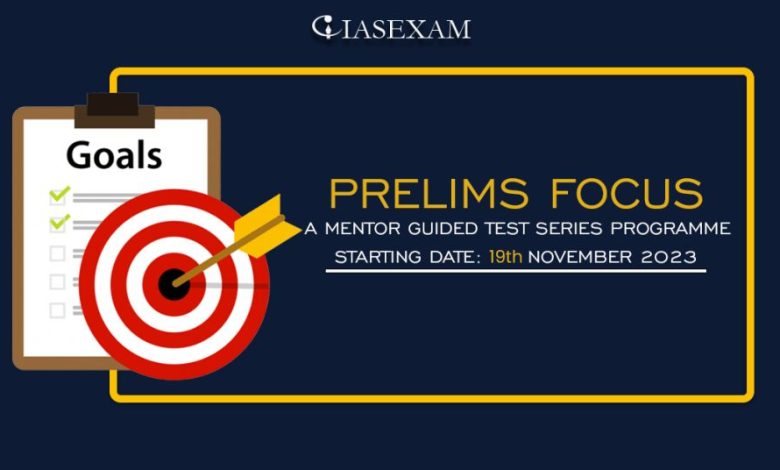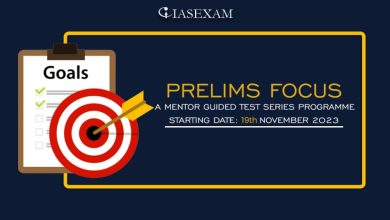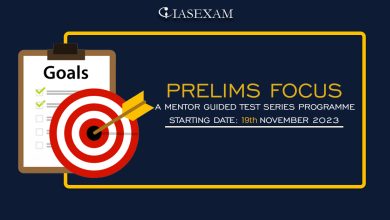Prelims Focus – 19th April 2024

Rogue wave
In News: An expedition to the southernmost waters encircling Antarctica has recently discovered that wind drives the formation of colossal rogue waves.
- Rogues, also called ‘intense typhoon waves’, are the waves which might be more than double the size of surrounding waves, are very unpredictable, and regularly come all of sudden from instructions other than prevailing wind and waves.
- Rogue waves emerge from robust wind forces and unpredictable waveform styles. They are often steep-sided with unusually deep troughs.
Submersible Platform for Acoustic Characterisation and Evaluation (SPACE)
In News: A state-of-the-art Submersible Platform for Acoustic Characterisation and Evaluation (SPACE) was recently inaugurated at Underwater Acoustic Research Facility, in Kerala.
- The SPACE is set up by the Naval Physical & Oceanographic Laboratory of DRDO.
- Objective: It has been designed as a most advantageous checking out and assessment hub for sonar systems meant for the Indian Navy onboard various systems consisting of ships, submarines and helicopters.
- The SPACE will include certain distinct assemblages;
- A platform which floats on the water surface and
- A submersible platform which may be diminished to any depth up to one hundred m the use of winch systems.
- Applications
- The SPACE can be utilized for evaluation of entire sonar structures, allowing for quick deployment and easy restoration of medical programs such as sensors and transducers.
- It might be appropriate for survey, sampling, and information series of air, surface, mid-water, and reservoir floor parameters the usage of present day scientific instrumentation.
NASA’s Perseverance Rover
In News: NASA’s Mars sample return program has been deemed too expensive while also taking too much time.
- NASA’s Perseverance Rover, nicknamed Percy, in 2023 created the first sample depot on some other world.
- The rover is designed to discover the Martian floor seeking out signs of past and present life on the planet to make contributions to NASA’s Mars Exploration Programme’s technology goals.
- The rover will perform numerous scientific experiments, such as searching for symptoms of existence on Mars, during its venture that is intended to last as a minimum two years.
- As in step with NASA, the pattern return program from Mars is too pricey and could only be done by the year 2040.
C-C nozzle
Recent News:
The Indian Space Research Organisation (ISRO) announced its successful creation of a lightweight Carbon-Carbon (C-C) nozzle for rocket engines.
About C-C nozzle:
- The Indian Space Research Organisation (ISRO) has developed a lightweight Carbon-Carbon (C-C) rocket engine nozzle with a Silicon Carbide coating to improve its performance in oxidising environments.
- This coating reduces stress and corrosion, allowing for higher operational temperatures.
- By replacing the current Columbium alloy nozzles on the Polar Satellite Launch Vehicle (PSLV)-4 with the C-C nozzle, a significant mass reduction and increase in payload capacity is expected.
- The C-C nozzle has low density, high strength, stiffness, and can maintain its properties at high temperatures.
Bumblebees
Recent News
- A recent study shows that bumblebees are able to withstand exposure to commonly used pesticides.
- Scientists tested the effects of different pesticides on bumblebees and found that exposure to these chemicals did not impact the bees’ ability to learn or their activity levels.
About the Species:
- Bumblebees, part of the Bombus genus, are social insects known for their role as pollinators in ecosystems.
- They have robust bodies, dense fur, and distinct black and yellow colouring. Bumblebees are crucial for pollinating various flowering plants, including crops like tomatoes, peppers, and berries.
- Unlike honeybees, bumblebee colonies are temporary, with a queen starting a new nest each year.
Tachyons
Recent News:
Physicists have suggested a radical theory that suggests our universe is mostly composed of tachyons, a type of particle that is hypothetical and always travels faster than the speed of light.
Details:
- Tachyons are theoretical particles that could travel faster than light.
- They are different from the particles we are familiar with, such as protons and electrons, which cannot exceed the speed of light.
- Tachyons have never been observed, but their existence is allowed by the laws of physics because they are thought to have imaginary mass.
- Scientists have conducted experiments using a detector called a cherenkov detector to try and find tachyons.
- This detector measures the speed of particles travelling through a medium, and if a particle moves faster than light in that medium, it creates cherenkov radiation.
- This is similar to the sonic boom created by an aeroplane exceeding the speed of sound.





.png)

